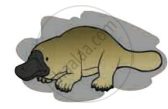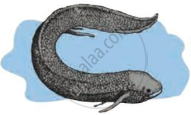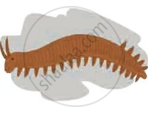Advertisements
Advertisements
प्रश्न
Explain any five types of evidence that support the theory of evolution.
उत्तर
- Morphological evidences: Morphological evidence is based on the similarity of size, shape or structure of organs among a group of organisms proving that they evolved from the same ancestor.
- Anatomical evidences: Anatomical evidence is the evidence of evolution based on the similarities in the anatomical structure of bones and bony joints in the organs of animals.
- Vestigial organs: Vestigial organs are useless organs that are degenerated or underdeveloped due to non-functionality through several years.
- Paleontological evidences: Paleontological evidence of evolution is based on the study of remnants and impressions of organisms that remain preserved underground as fossils.
- Connecting links: Connecting links are some plants or animals that show morphological characters by which they can be related to two different groups of organisms.
- Embryological evidences: Embryological evidence arises from comparative study of embryological developmental stages of various vertebrates. Embryos of different vertebrates appear similar during the initial stages of development and these similarities gradually decrease as the embryo develops.
APPEARS IN
संबंधित प्रश्न
Write the similarity between the wing of a butterfly and the wing of a bat. What do you infer from the above with reference to evolution?
“Two areas of study namely 'evolution' and 'classification' are interlinked'. Justify this statement.
Differentiate between analogy and homology giving one example each of plant and animal respectively.
How analogy and homology considered as an evidence in support of evolution ?
Which one of the following pairs of vegetables is an example of homologous structures?
(A) Potato and sweet potato
(B) Carrot and radish
(C) Carrot and tomato
(D) Tomato and radish
Name the scientists who Discovered the fossil of Australopithecus
Differentiate between analogous and homologous structures.
The forelimbs of a frog, a bird and a man show the same basic design (or basic structure) of bones. What name is given to such organs?
Name two animals having homologous organs and two having analogous organs. Name these organs.
Out of bacteria, spider, fish and chimpanzee, which organism has a better body design in evolutionary terms? Give reason for your answer.
One pair of organs in the following animals are not homologous. This is :
(a) forelimbs in humans and lizard
(b) forelimbs in lizard and frog
(c) wings in butterfly and bat
(d) wings in bat and bird
X, Y, and Z are three animals. The animal X can fly but animal Y can only run on ground or walls. The forelimbs of animals X and Y have the same basic design but they are used for different purposes such as flying and running respectively. The animal Z became extinct an long time ago. The study of fossils of Z tells us that it had some features like those of X and some like those of Y. In fact, Z is said to form a connecting link in the evolutionary chain of X and Y.
(a) What could the animals X, Y and Z be?
(b) What name is given to the forelimbs like those of X and Y which have the same basic design but different functions?
(c) Name one feature in which Z resembled X.
(d) Name one feature in which Z resembled Y.
(e) Which is the correct evolutionary chain involving X, Y and Z : X → Z → Y or Y → Z → X?
Select a set of homologous organs from the following:
(A) Wings of a bat and wings of a butterfly
(B) Wings of a pigeon and wings of a bat
(C) Wings of a butterfly and wings of a pigeon
(D) Forelimbs of a duck, forelimbs of a cow and forelimbs of a lizard
You have potato, carrot, radish, sweet potato, tomato and ginger bought from the market in your jute bag. Identify two vegetables to represent the correct homologous structures.
(A) Potato and tomato
(B) Carrot and tomato
(C) Potato and sweet potato
(D) Carrot and radish
Complete the following chart:

Similarities in the initial stages indicate the _______ evidence.
_____________ is a vestigial organ in human beings.
The decaying process of C-14 occurs continuously in dead organisms only.
Write a short note:
Embryological evidences
Write the answers to the questions by observing the figure below.
 |
 |
 |
| (a) | (b) | (c) |
- Write the name of the animal ‘(a)’ in the figure.
- Write the name of the animal ‘(b)’ in the figure.
- Write the name of the animal ‘(c)’ in the figure.
- Which evolutionary evidence is illustrated by this figure?
- Write the definition of that evidence for evolution.
A human hand, a front leg of a cat, a front flipper of a whale and a bat’s wing look dissimilar and adapted for different functions. What is the name given to these organs?
Homologous organs and vestigial organs are examples of ______ type of evidence in evolution.
Select the correct statement.
Homologous organs are:
Tendons and ligaments are examples of ______.
Evolutionary convergence is the development of:
Which is not a vestigial organ in a man?
Fossils are generally found in ______.
Did aquatic life forms get fossilised? If, yes where do we come across such fossils?
How do we compute the age of a living tree?
How do we compute the age of a rock?
While creation and presence of variation is directionless, natural selection is directional as it is in the context of adaptation. Comment.
The evolutionary story of moths in England during industrialisation reveals, that 'evolution is apparently reversible'. Clarify this statement.
Explain divergent evolution in detail. What is the driving force behind it?
Write a note on the significance of Palaeontology.
Give a definition of Palaeontology.
